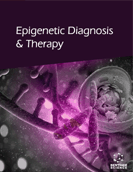Abstract
It is now possible to describe the known genetic and epigenetic effects of 5- azacytidine in terms of its ability and the ability of its primary breakdown product (guanylurea) to produce replication stress, through their combined effects in sequestering DNA methyltransferases and hindering DNA replication. Sequestration of methyltransferases can account for most of the epigenetic changes seen in surviving cells (e.g. hypomethylation), while the resulting replication stress produces all the expected genetic changes associated with this 5-azacytidine exposure (e.g. mutagenesis, induction of double strand breaks, induction of fragile sites, and induction of sister chromatid exchange at fragile sites) in addition to contributing to hypomethylation. Nearly all of these effects have now been documented in different disciplines. Collectively, they form a more complete picture of the direct and indirect effects of the action of 5-azacytidine and its breakdown products that link structure specific nucleases like ERCC1and MUS81-EME to the genetic damage that these drugs produce, and suggests that double strand break repair and the B and non-B DNA structures it produces play important roles in 5-azacytidine induced gene activation.
Keywords: Azacytidine, double strand break repair, fragile sites, guanylurea, methytransferase, structure specific nuclease.
Graphical Abstract
 21
21

